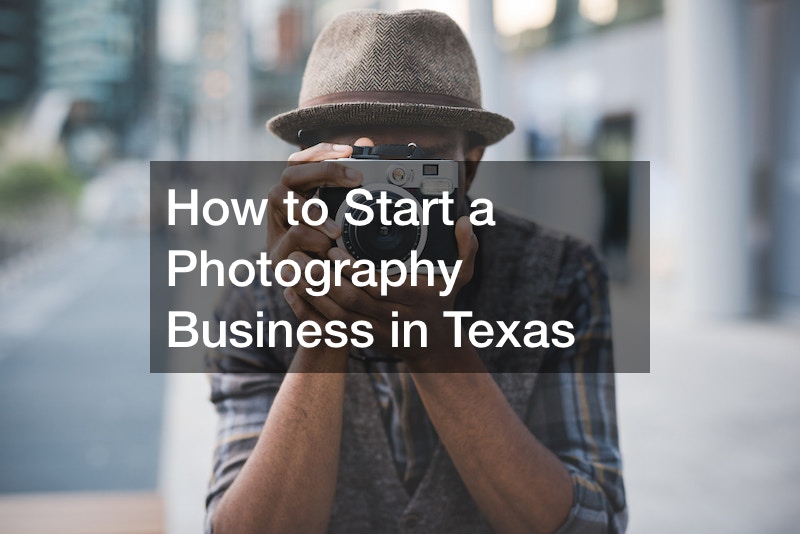
Every bride wants that picture-perfect wedding. A gorgeous dress on a beautiful day filled with happy faces beaming at the joy of having attended the wedding of their lives. Making this happen requires a bunch of good planning. And even then, it’s hard not to be apprehensive that the whole thing might just come off the rails – there are a lot of steps to take before the perfect wedding becomes a reality. But as with everything, having a good plan and sticking to it will get you through. Here’s the ultimate bride’s survival guide that will hopefully keep you from pulling your hair in frustration:
1. Hire a Wedding Planner

This is the easiest path to shed the burden of planning a wedding. A wedding planner is a multi-talented individual who can help you stay on budget; design and coordinate the wedding. They can book vendors and deal with any emergencies that turn up. Wedding planners also have inside knowledge of the wedding industry. They are familiar with caterers, florists, photographers, DJs, hair stylists, and stationery designers. Their industry knowledge allows them to negotiate better deals on your behalf and understand the paperwork/fine print that comes with dealing with vendors. This all means that on D-day, you’ll have a pro you can count on. A wedding planner can be the ultimate bride’s survival guide.
Wedding planners come in three flavors: month-of coordinators, à la carte, and full service. Full-service planners will hold your hand throughout the entire process, leaving you with lots of time to admire your wedding ring. They will help you design and create your perfect wedding, as well as coordinate vendors and wedding day proceedings. With this option, you can pretty much put your feet up. An à la carte planner is one that you can contact as needed for help on specific issues, e.g., finding a perfect caterer for your Italian Bistro menu. Getting a part-time planner is s good way to save some coin.
Month-of coordinators handle wedding day logistics. You will work together from about two weeks to a month before the wedding. They will coordinate the ceremony and reception, keep everyone on schedule, and take care of the immediate post-wedding activities. Alternatively, you can hire a day-of coordinator to be present on the wedding day or weekend. In 2021, close to 30% of couples relied on a wedding planner. The most popular planners were full-service planners and day-of-coordinators.
2. Wedding Dress
A wedding dress costs an average of $1,800, and all eyes will want to see it. It’s a star of the show, so it’s got to be immaculate. When picking out your gown, don’t envision yourself going on a grand weight loss journey with you weighing 20 pounds less at your wedding. That means you shouldn’t order a dress some sizes down and use it as motivation to lose weight as this might very well lead to disappointment.
Have your measurements professionally taken rather than ordering a gown online. Wedding dress measurements can differ from what you are used to, so it’s important to measure and try out the gown. As you try it out, don’t just stand about. Move around and get a feel for it since you’ll be dancing, sitting, turning, and bending at your wedding. Get a friend to observe you and how the dress moves with you – it should flatter you from all angles, which means you need a talented seamstress. In addition, don’t order a wedding dress before you’ve decided on a theme for the wedding to avoid a theme mismatch.
3. Oral Hygiene
Just as the wedding dress ought to be perfect, you must also be. Your smile will warm many hearts on that day, so how about you make it as radiant as can be? Book an appointment with your dentist for teeth cleaning and, if need be, whitening. If you plan to whiten your teeth, do so at least two weeks before the wedding. This will allow enough time for you to get the results you desire and also allow some healing to happen in case the gum is accidentally exposed during the procedure.
If you require more complex orthodontic treatments, e.g., tooth repair using veneers, leave an appropriate time for the procedure. Adjusting to veneers can take two to three weeks, while procedures like realignment and straightening can take a year or more. The ultimate bride’s survival guide advises that you visit the dentist as soon as possible to know what procedures can be done in your timeframe. In addition to an early dental visit, carry some travel-sized mouthwash and mints to your wedding to help you freshen up when needed.
4. Undergarments
When you were trying out your dress, your friend should have checked that you weren’t flashing the guests while bending. Similarly, ensuring that your undergarments work with your dress is important. Make an appointment for a bra fitting to know your exact size, then buy an excellent strapless bra that works. For dresses such as the ball gown and A-line, you can wear a corset as it will remain well concealed under the flowy dress.
For a mermaid and trumpet dress, a corset or long-line bra won’t work as its lines will be visible under the dress. Instead, use shapewear such as Spanx, and if the fabric slips in between your legs as you walk, Spanx’s Half Slip can help. Another common problem is the panty line, for which the cure is a seamless raw-cut edge thong that matches the tone of your skin. Pick out undergarments that work for you and try other solutions such as tape strips, stick-on bras, or even go bra-less if your gown has an inbuilt corset.
5. Sewing Tools
The ultimate bride’s survival guide recommends you pack a travel-sized sewing kit for emergencies since you never know when something might come apart at the seams. It can be helpful if a button comes loose or some other horrid thing happens. Ensure that your sewing kit matches the attire of your wedding day. Include double-sided tape, fashion tape, fabric tape, and super glue for when you need to fix something quickly or prevent a wardrobe malfunction.
6. Different Shoes
Choosing between heels, booties, pointed toes, peep toes, lace, beading, and other types of wedding shoes is a blast. But those shoes were built more for style than comfort. You need something else for the other parts of the wedding like some flats for dancing at the reception or something comfortable for walking. Perhaps some slippers that you can easily slip in and out of. Come prepared, and your feet will thank you.
7. Flower Advice
The ultimate bride’s survival guide recommends that you get flowers that won’t wilt as the day passes. Flowers like the hydrangea require a water source throughout the day or else. Some flowers, like gardenias, will age faster when they come into contact with the oils on people’s hands. To avoid this, consult your floral designer about the characteristics of different flowers. They also shouldn’t cause you allergies, nor should the bouquets provided be too heavy; otherwise, you risk tiring your bridesmaids.
If you can, include grandmothers, godmothers, stepmothers, and other honorable women in the florals by letting them choose what flowers to wear. It will feel inclusive and delightful. You also need to have a well-thought-out plan for the delivery and placing of the flowers. This ensures that everything is where it should be and that everyone has their flowers.
8. Invitations
People will be overjoyed to find your wedding invitation in their mailboxes. It’s an important part of the wedding process and crucial to the ultimate bride’s survival guide. Your invitation will include key information such as location and time, but it will also convey the type of wedding people should expect – formal or casual. A formal affair will likely use fine stationery paper with engraved print or calligraphy, while a lesser one will be more relaxed. Take care with the wording as well. Not including the parents’ names when they’ve paid for the wedding might be taken poorly. If you want to include the names, but they are too many, consider going with a tri-fold invitation.
If you wish to include children on the invite, you can add ‘and family.’ If not, only include the names of the adult invitees, and if a family RSVPs their children, call them back to inform them that it’s an adult-only event. Practice your handwriting as well to make your invitations shine. As for when to send the invites, do so six weeks to months before the wedding. Don’t inconvenience your guests with a surprise.
9. First Aid Kit
For those times when you have some minor illness, a first aid kit can save your bacon. Of course, if it’s something more serious, maybe a bad toothache or body pain, you should pop into the local general dentistry or see a medical expert. However, many issues can reasonably be dealt with without such an inconvenience. A first aid kit will be handy when dealing with headaches, scrapes, tummy aches, or some other minor trouble. A first aid kit will contain many of the medical care items you’ll need in a pinch.
10. Pause and Don’t Rush

You’re engaged. That’s awesome, but you shouldn’t go nuts calling the florist, venue, and whatnot right away. Pause and prioritize what needs to be done. The ultimate bride’s survival guide suggests you set a budget and research pricing thoroughly. Money is a real concern for any wedding, so you had better be clear about it before approaching your parents for help. Consider also that funding from parents might come with controlling strings attached, so you need to be wary of that, or you may need some therapy and wellness guidance after marriage.
The bride and groom’s parents may have different financial capabilities, so you may be better served by pooling the money into a fund you’ll manage. Don’t promise they can plan something before you’ve thought it out. Think of how many guests you want at your wedding. While you can be flexible, don’t get bossed into inviting way more than you want. The more you consider the different aspects of your wedding, the better prepared you’ll be.
11. Eat, Drink, and Have Fun!

It’s easy to get caught up in the hubbub and excitement of the day and forget to check up on yourself. The ultimate bride’s survival guide advises that you stay nourished, or you may start to feel a bit woozy while saying your vows. Take time to eat and drink enough water to stay hydrated but not need the bathroom every now and then. Savor the goings on, socialize, and get your pictures taken – this is a day you’ll want to revisit over and over again!
According to The Knot’s 2021 Real Weddings Study, the average cost of a wedding was $28,000. The venue will take the biggest chunk of that at around 30%. Catering is next, taking about 23% of your budget. A band will take about 13%, while other items such as wedding rings, photography, flowers, videography, liquor, couple’s attire, and the wedding planner take less than 10% each.
While $28,000 is a large figure, it’s important to note that there are large million-dollar weddings that bring up the average of smaller $10,000 weddings. The ultimate bride’s survival guide advises that you have a wedding that suits your budget. Look into ways to reduce costs, such as hiring friends and family for various roles, a smaller guest list, using suburban venues, and choosing an off-peak day and season. Negotiate where you can and add a buffer to your budget to allow for unexpected costs. The key to having the perfect wedding is to plan well.




